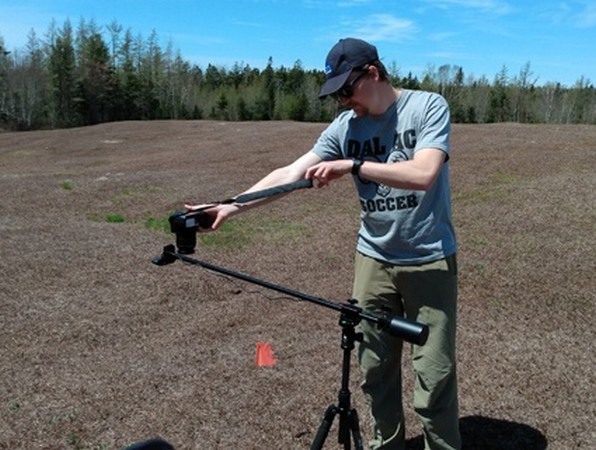The wild blueberry market has developed into a multimillion-dollar industry in North America, with consumers pushing up demand as they seek out the prized berries for a range of health benefits.
Growing and harvesting the fruit can, however, be complicated by weeds that infest commercial fields, compete with blueberry plants for nutrients and interfere with harvesting equipment. To stem the spread of unwanted plants, farmers often rely on broadcast applications of herbicides to eliminate the weeds, some of which have become resistant to the chemicals because of repeated use.

The Mechanized Systems Research Team at Dalhousie University is addressing that problem through the use of deep learning convolutional neural networks (CNNs) — an emerging smart technology that can identify weeds and give farmers the information they need to apply agrochemicals in a more targeted fashion.
Travis Esau, an assistant professor in the Faculty of Agriculture Department of Engineering, recently published a paper on this topic with his Ph.D. student, Patrick Hennessy. This research determined the technology could detect sheep sorrel and hair fescue — two common weeds that affect Nova Scotia blueberry crops — in images of almost 60 wild blueberry fields in the province.
“With this research we discovered how CNNs can very accurately detect the presence of hair fescue and sheep sorrel when herbicides are being applied,” said Dr. Esau.
“As a result, we can incorporate the trained CNN into smart applicators to allow for spot treatment of agrochemicals and save significant amounts of input from being needlessly wasted, resulting in more sustainable and environmentally conscious management decisions.”
How it works
CNNs can intelligently identify visual features and find patterns associated with the target plant with minimal input from the user, making them easily adaptable for new targets. They are trained to detect new targets by repeatedly showing a computer many labelled pictures of the desired target, in this case particular weeds.
The technology has been used to indicate stages of ripeness in blueberries and estimate potential yields. CNNs have also effectively detected weeds interfering with strawberries, potatoes, Florida vegetables, and other crops. They have been used for detecting diseases on tomatoes, apples, strawberries and various other plants.
Eight digital cameras captured thousands of colour pictures of wild blueberry fields containing hair fescue and sheep sorrel in central and northern Nova Scotia. The CNNs trained with these images identified hair fescue and sheep sorrel with accuracies of up to 97 per cent and 90 per cent, respectively. The results of this study indicated that CNNs provide a high level of accuracy for weed identification in wild blueberry fields.
Dr. Esau says the technology could make farming much more efficient and inexpensive if used with smart sprayers to precisely target the unwanted plants. Unlike previous technologies, CNNs can distinguish between different weeds.
For more information: dal.ca
